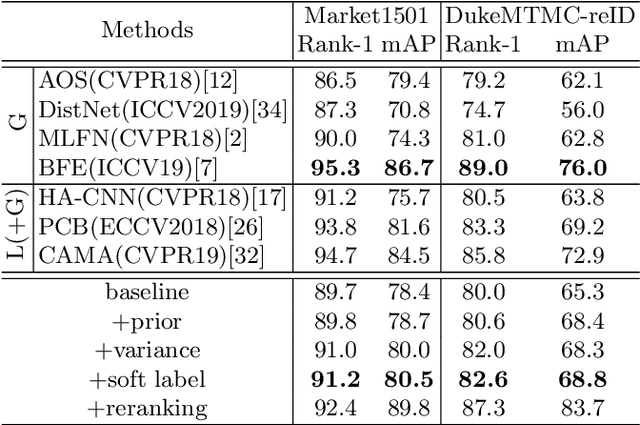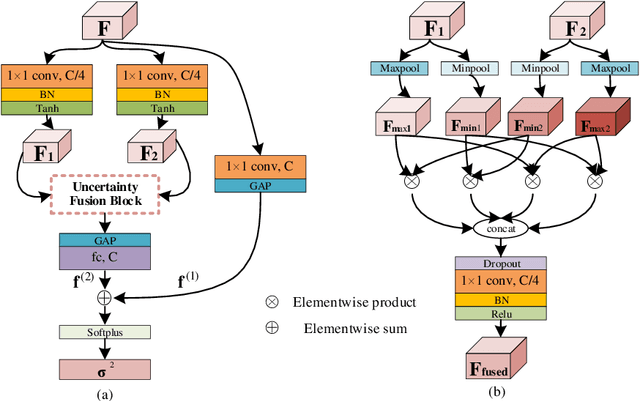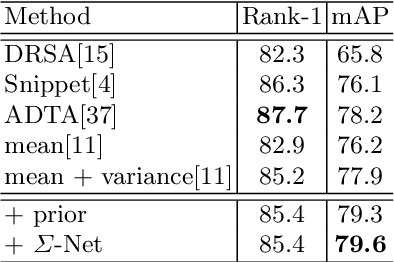Binyu He
Learning Posterior and Prior for Uncertainty Modeling in Person Re-Identification
Jul 17, 2020



Abstract:Data uncertainty in practical person reID is ubiquitous, hence it requires not only learning the discriminative features, but also modeling the uncertainty based on the input. This paper proposes to learn the sample posterior and the class prior distribution in the latent space, so that not only representative features but also the uncertainty can be built by the model. The prior reflects the distribution of all data in the same class, and it is the trainable model parameters. While the posterior is the probability density of a single sample, so it is actually the feature defined on the input. We assume that both of them are in Gaussian form. To simultaneously model them, we put forward a distribution loss, which measures the KL divergence from the posterior to the priors in the manner of supervised learning. In addition, we assume that the posterior variance, which is essentially the uncertainty, is supposed to have the second-order characteristic. Therefore, a $\Sigma-$net is proposed to compute it by the high order representation from its input. Extensive experiments have been carried out on Market1501, DukeMTMC, MARS and noisy dataset as well.
Grad-Cam Guided Progressive Feature CutMix for Classification
Jul 17, 2020



Abstract:Image features from a small local region often give strong evidence in the classification task. However, CNN suffers from paying too much attention only on these local areas, thus ignoring other discriminative regions. This paper deals with this issue by performing the attentive feature cutmix in a progressive manner, among the multi-branch classifier trained on the same task. Specifically, we build the several sequential head branches, with the first global branch fed the original features without any constrains, and other following branches given the attentive cutmix features. The grad-CAM is employed to guide input features of them, so that discriminative region blocks in the current branch are intentionally cut and replaced by those from other images, hence preventing the model from relying on only the small regions and forcing it to gradually focus on large areas. Extensive experiments have been carried out on reID datasets such as the Market1501, DukeMTMC and CUHK03, showing that the proposed algorithm can boost the classification performance significantly.
 Add to Chrome
Add to Chrome Add to Firefox
Add to Firefox Add to Edge
Add to Edge